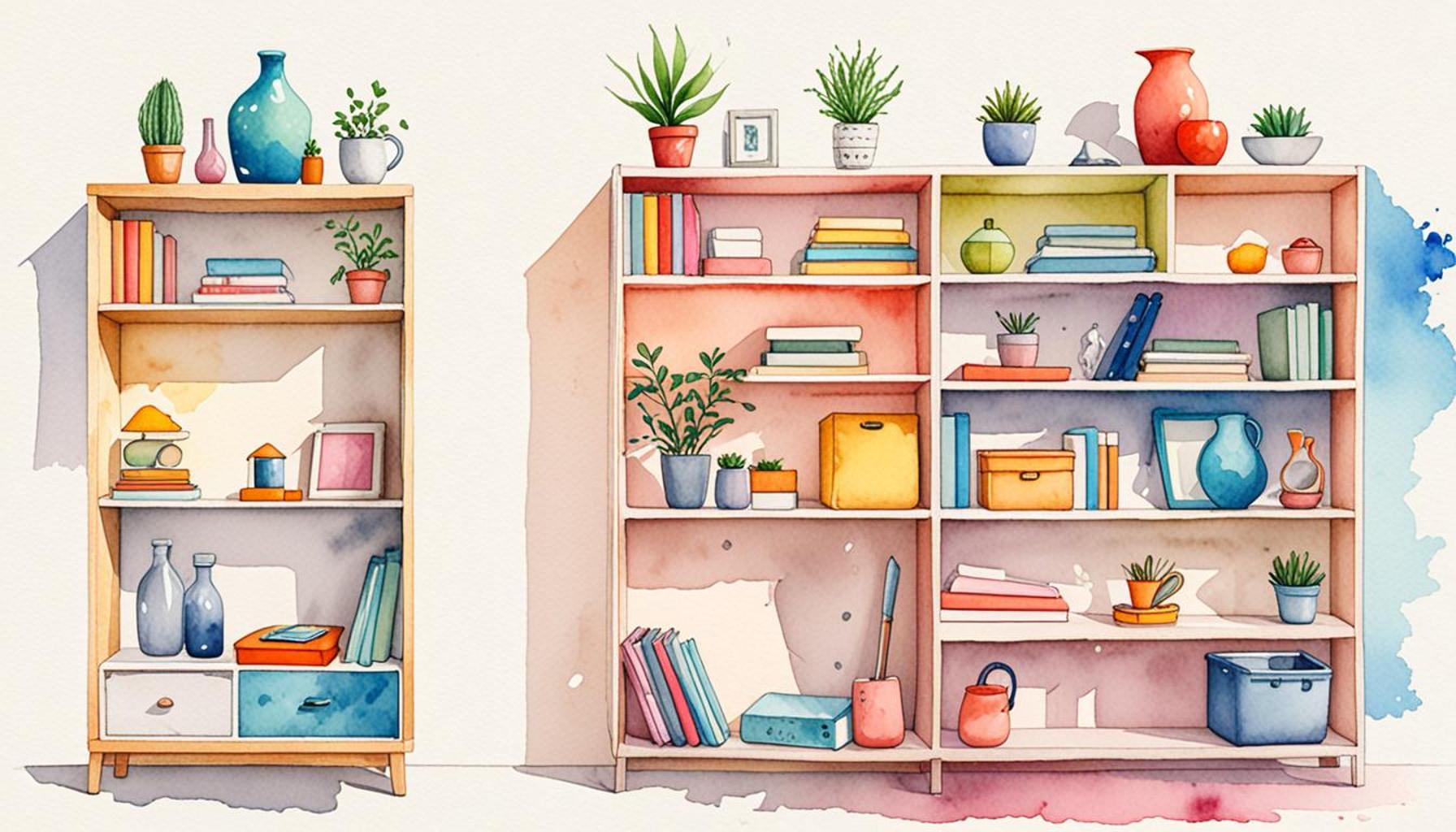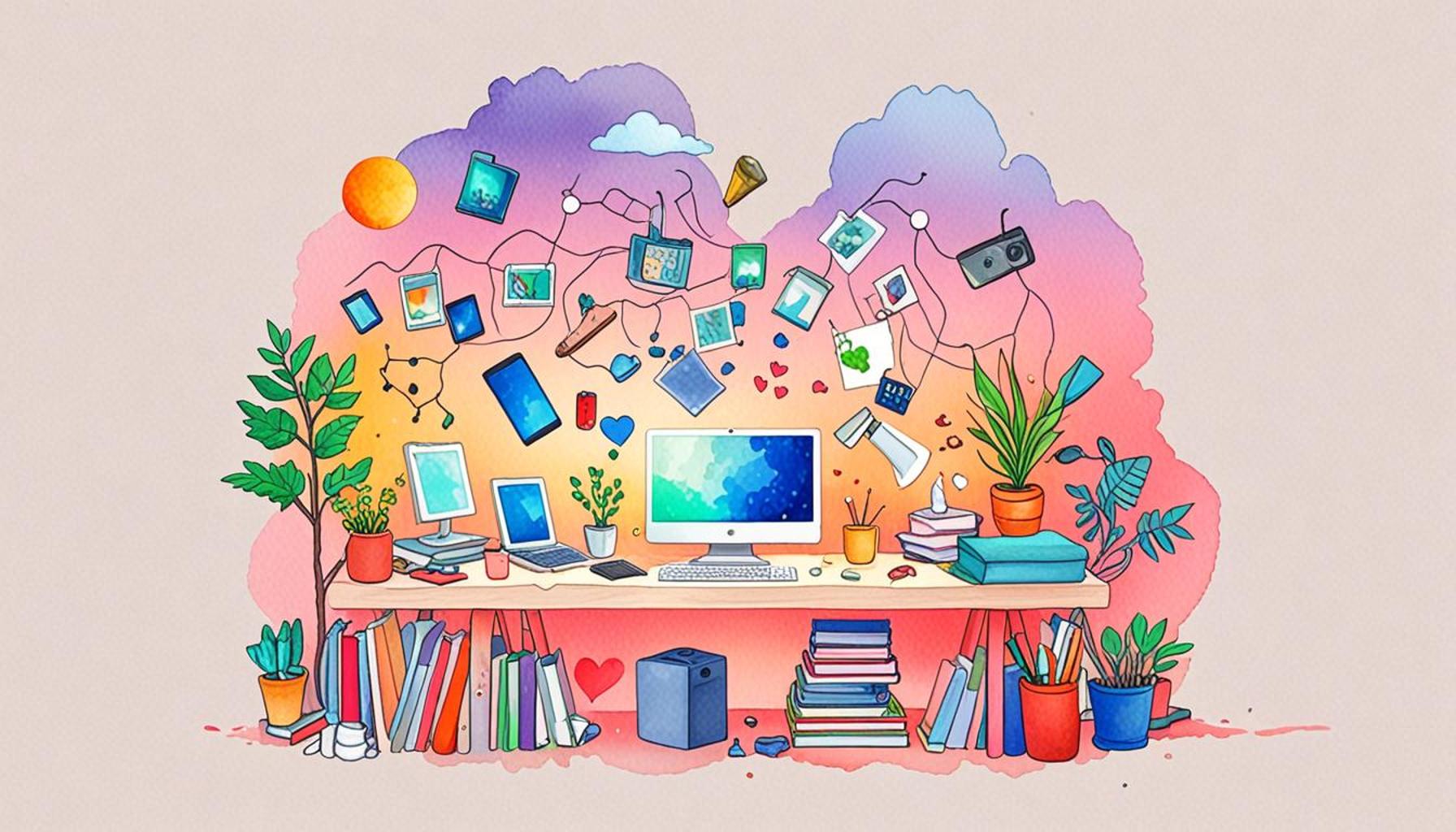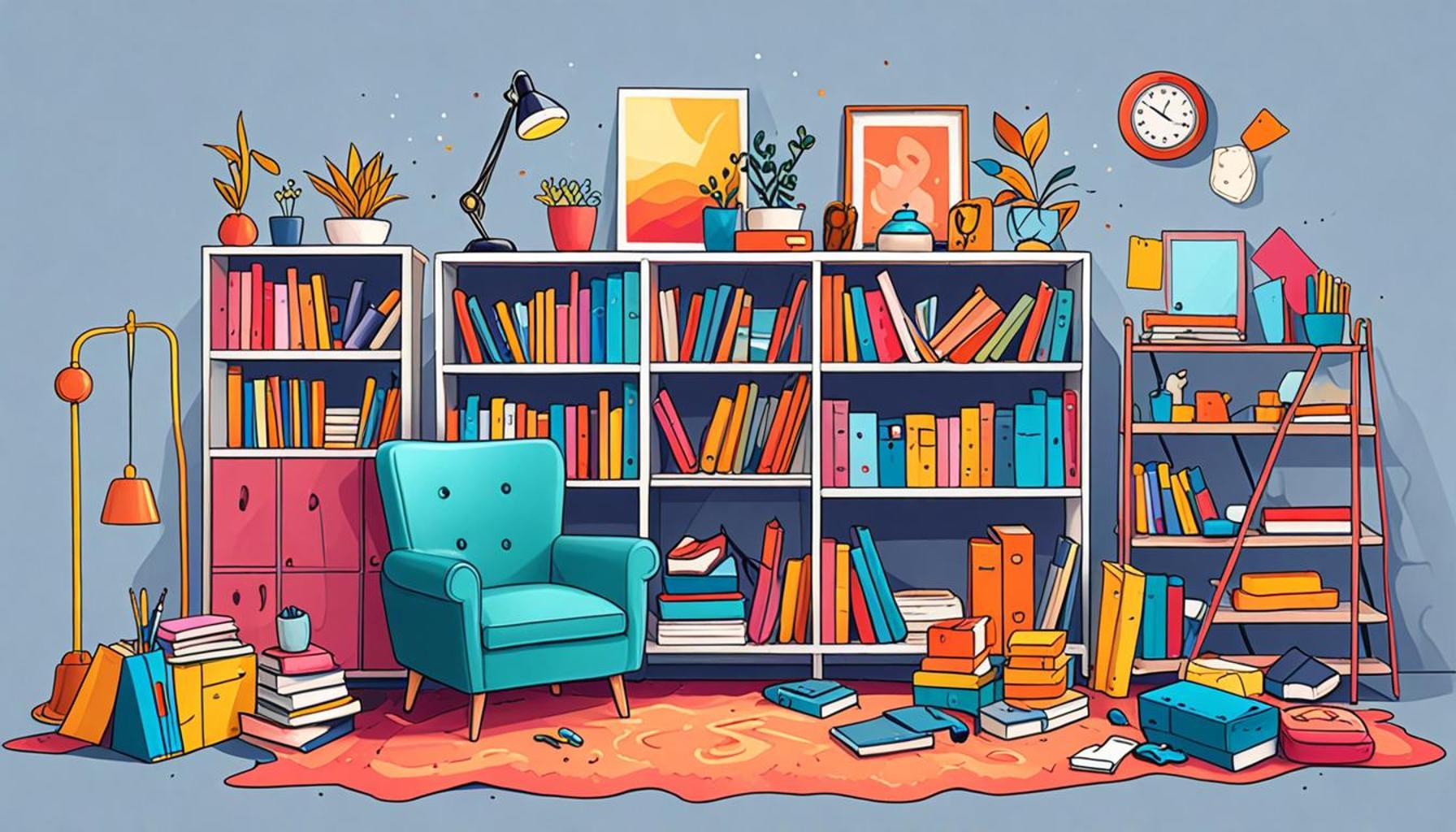Advanced Decluttering Methods: How Minimalism Can Transform Your Living Space

Exploring Minimalism for a Brighter Living Space
Living in a cluttered environment can lead to increased stress and decreased productivity. It can become overwhelming when surrounded by excess belongings, ultimately affecting your state of mind. Embracing advanced decluttering methods inspired by minimalism can transform your chaotic space into a sanctuary that encourages calm and focus. Here’s how you can start this transformative journey:
- Assess the space: Begin by taking a systematic inventory of your possessions. Go room by room, and evaluate each item based on its necessity and emotional value. This process can be as simple as asking yourself if you have used it in the past year or if it truly brings you joy. A visual checklist can be helpful, allowing you to see the accumulation of items and tailor your decluttering strategy accordingly.
- Set clear goals: Define what a minimalist space means for you personally. Minimalism can look different for everyone; for some, it may involve a stark, monochromatic aesthetic, while for others, it may be about creating an open, airy feel with plants and natural light. Consider what aspects of minimalism resonate with your lifestyle and how you can incorporate them seamlessly into your home.
- Use the 80/20 rule: Identify items that provide 80% of your utility and joy. This principle suggests that a small percentage of your possessions greatly contributes to your satisfaction and functionality. Focus on keeping these essentials, while letting go of items that do not serve a vital purpose. This can lead to more meaningful use of your remaining space.
However, minimalism is not just about discarding belongings; it’s about creating a harmonious relationship with your environment. The philosophy encourages intentional living, which includes:
- Purposeful purchases: Invest only in items that add real value to your life. Before acquiring new items, ask yourself if they enhance your routine or aesthetic. For example, consider the difference a high-quality kitchen appliance can make if you enjoy cooking versus a decorative piece that might not hold up over time.
- Mindful organization: Arrange items in a way that promotes ease and clarity. This could mean utilizing storage solutions that align with your aesthetic while ensuring items are easily accessible. Using clear bins or labeled boxes can streamline organization, reducing the time spent searching for essential products.
- Regular maintenance: Commit to ongoing decluttering to prevent a resurgence of chaos. Implement a seasonal review where you reassess your belongings. This habit can establish an ongoing connection to minimalism by reminding you of the reasons you embraced it initially.
By adopting these strategies, you will witness a profound transformation of your living space. A minimalist lifestyle not only promotes physical clarity but also encourages mental tranquility. The calming effect of a decluttered environment can lead to increased creativity and focus. As you immerse yourself in this lifestyle, consider how these methods can lead you toward a more serene and fulfilling life, making room for not only a cleaner space but also a clearer mind.
DISCOVER MORE: Click here to learn about enhancing your workspace
Implementing the Minimalist Mindset: Strategies for Effective Decluttering
Embracing a minimalist lifestyle involves not just a reduction in physical possessions but a fundamental shift in mindset that encourages conscious living. To embark on this journey, it is essential to integrate advanced decluttering methods that resonate with your personal values, lifestyle, and desired aesthetic. Below are some practical strategies to consider as you seek to transform your living environment:
- Incorporate the Four-Box Method: This effective technique requires you to have four boxes labeled: Keep, Donate, Sell, and Trash. As you go through your belongings, place each item in the corresponding box based on its future within your home. This method is not only straightforward, but it can help streamline decision-making, preventing you from second-guessing your choices.
- Analyze Your Shopping Habits: Understanding your purchasing patterns is crucial to maintaining a minimalist space. Start by creating a 30-day shopping ban. This exercise will help you distinguish between true needs and impulsive desires. After the ban, take time to evaluate each intended purchase’s necessity and its potential impact on your space.
- Practice ‘One In, One Out’: To prevent clutter from accumulating in the future, adopt the principle of ‘one in, one out.’ Each time you acquire a new item, commit to removing a similar item from your space. This balance ensures that your home remains a reflection of intentionality and mindfulness.
- Create a Minimalism Challenge: Engage with friends or family members by embarking on a decluttering challenge together. Set a timeline—perhaps 30 days—where each participant tackles one area of their home per day. Sharing progress on social media or within a group can enhance motivation, while also allowing you to access varied approaches to decluttering.
While these techniques provide excellent starting points, the essence of minimalism lies in deeply evaluating your relationship with possessions. This ideology is often reflected in how it fosters gratitude and intentionality in both decluttering and acquiring new items. By consistently applying these strategies, you can begin to form a thoughtful connection to your belongings, ensuring they truly serve a purpose in your life.
Moreover, minimalism is increasingly becoming popular in the United States, with individuals recognizing the benefits it can bring not only to their living spaces but also to their mental health and well-being. Studies show that a clutter-free environment can lead to lower cortisol levels, resulting in reduced stress and anxiety. As such, incorporating minimalism becomes more than just an aesthetic choice; it evolves into a lifestyle shift that invites peace and clarity into one’s everyday existence.
As you venture deeper into your decluttering journey, consider the lasting impact these methods can generate. You are not only creating a visually appealing space but also fostering a mindset that prioritizes simplicity and mindfulness—two cornerstones of a truly minimalistic lifestyle.
| Categories | Key Features |
|---|---|
| Physical Decluttering | This involves removing unnecessary items from your space to enhance its beauty and functionality. |
| Emotional Clarity | Minimizing possessions can lead to improved mental well-being and emotional clarity. |
| Digital Decluttering | Organizing or deleting digital files allows for streamlined productivity and less distraction. |
| Increased Productivity | With fewer distractions, one can focus better on tasks, achieving more in less time. |
In adopting advanced decluttering methods, the process transcends mere organization, becoming a journey towards minimalism that unveils the potential for transformation. Each category in the table above highlights essential aspects of decluttering, emphasizing how physical and digital spaces can be optimized. Notably, physical decluttering doesn’t just tidy up your surroundings; it significantly affects your emotional landscape, offering a pathway towards mental freedom. Similarly, digital decluttering suits our increasingly tech-driven lives, establishing an efficient workspace that cultivates focus. As productivity flourishes, so does the opportunity to cultivate a tranquil living environment. The interplay between a clutter-free space and enhanced mental clarity showcases minimalism’s profound ability to elevate our lifestyles and well-being.
DISCOVER MORE: Click here for decluttering tips
Creating Functional Spaces: The Role of Intentional Design
As you embrace a minimalist approach, it’s essential to understand that decluttering is not merely about clearing out possessions; it’s also about creating functional living spaces that foster mental well-being. This involves rethinking how you use areas in your home and ensuring each space serves a specific purpose. By adopting a mindset of intentional design, you can maximize both functionality and aesthetics in your home.
Start by assessing how you currently use each room. Are certain areas overcrowded while others remain bare? Identifying underutilized spaces can provide opportunities for transformation. For example, consider converting a seldom-used guest bedroom into a functional home office or yoga studio. By creating a dedicated space for activities you value, you embed purpose into the environment, driving down the need for excess belongings.
Another crucial aspect of intentional design is taking advantage of multi-functional furniture. Investing in pieces that serve more than one purpose can drastically reduce clutter. Furniture like ottomans with storage compartments, collapsible dining tables, or murphy beds not only save space but also offer versatility, allowing rooms to adapt to your evolving needs. Such alterations keep your living environment tidy and give a sense of freedom and adaptability to your living space.
Mindful Organization Techniques
Effective organization plays a pivotal role in the minimalist lifestyle. Many individuals find themselves failing at decluttering not due to a lack of effort but because they lack proper organization strategies. Techniques like the Marie Kondo method, which promotes organizing by category rather than location, can help you assess each item’s sentimental value and functional purpose. Kondo’s philosophy of “spark joy” forces you to evaluate the emotional connection with your items, leading to more thoughtful decisions about what stays and what goes.
In addition, consider adopting the 60/90 rule, a guideline that helps manage items that don’t qualify as sentimental but aren’t frequently used. If you haven’t used an item in the last 60 days, and it’s not within the realm of seasonally needed goods, consider letting it go. Expanding this timeline to 90 days for larger items can further guide your decluttering process.
Utilizing Technology for Minimalism
In the digital age, technology plays a pivotal role in supporting minimalist lifestyles. Apps designed for organizing and managing possessions can simplify inventory processes. Programs like Sortly allows users to photograph and categorize belongings, making it easier to track what you own and identify items to eliminate. This modern approach can facilitate a minimalist home in a more efficient manner, blending the virtues of old-school decluttering with contemporary technology.
Moreover, consider evaluating your digital clutter, as it often transcends the physical space. Take time to go through your digital devices, deleting unused apps and unnecessary files. Just as physical clutter can cause anxiety, so can a crowded digital environment. A decluttered digital life complements your journey into minimalism, helping you achieve a holistic sense of calm and focus.
Incorporating these concepts into your decluttering journey will not only elevate your living space but also create an environment that embodies tranquility and purpose. Through advanced decluttering methods and mindful organization, you can establish a sanctuary that allows for enhanced mindfulness and peace of mind—an essential aspect of a fulfilling and simplified lifestyle.
DISCOVER MORE: Click here to learn how technology can transform minimalist living
Embracing Minimalism for Lasting Change
In conclusion, integrating advanced decluttering methods into your life can profoundly transform your living space, fostering a sense of calm and purpose. The journey towards minimalism is not just about discarding items; it’s about cultivating an environment that mirrors your values and aspirations. By adopting techniques such as intentional design, multi-functional furniture selections, and mindful organization, you can create a sanctuary that resonates with tranquility. Each item you choose to keep should contribute meaningfully to your lifestyle, enriching your daily experiences rather than complicating them.
Additionally, leveraging technology can further enhance your decluttering process, allowing for efficient management of both physical and digital spaces. As you evaluate what truly serves you, consider how much easier it becomes to find clarity amid the chaos. Life is often overwhelming, and a decluttered space can provide not just a visual relief but also a mental one, leading to improved focus and creativity. The benefits of minimalism extend beyond aesthetics; they promote a fulfilling and sustainable lifestyle.
Ultimately, the path to minimalism is a personal journey, encouraging each individual to reflect on their relationship with belongings and space. As you embrace these advanced decluttering methods, remember that transformation is a continuous process. Allow your living space to evolve as your needs and values change, ensuring that it remains a true reflection of who you are. So take that first step towards a minimalist lifestyle—your mind and home will thank you.



